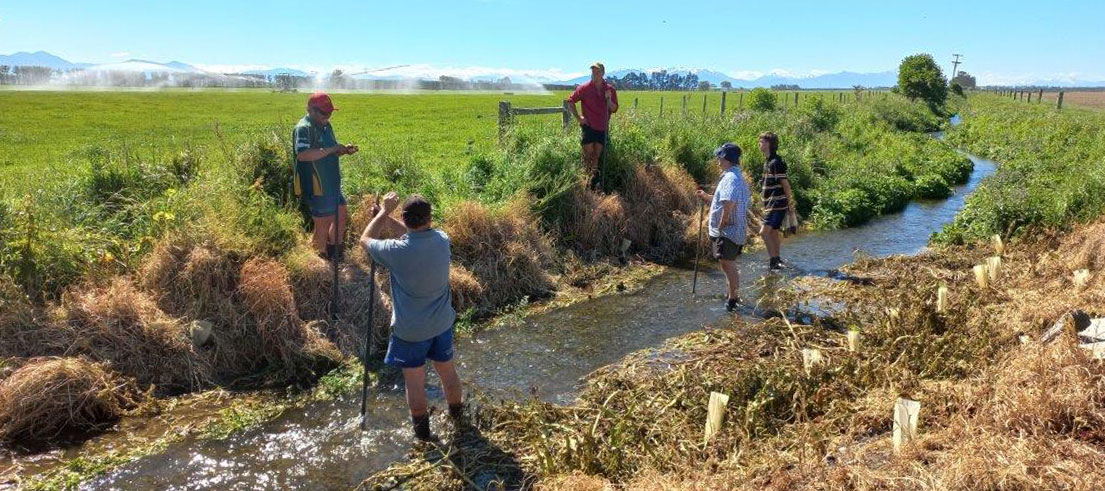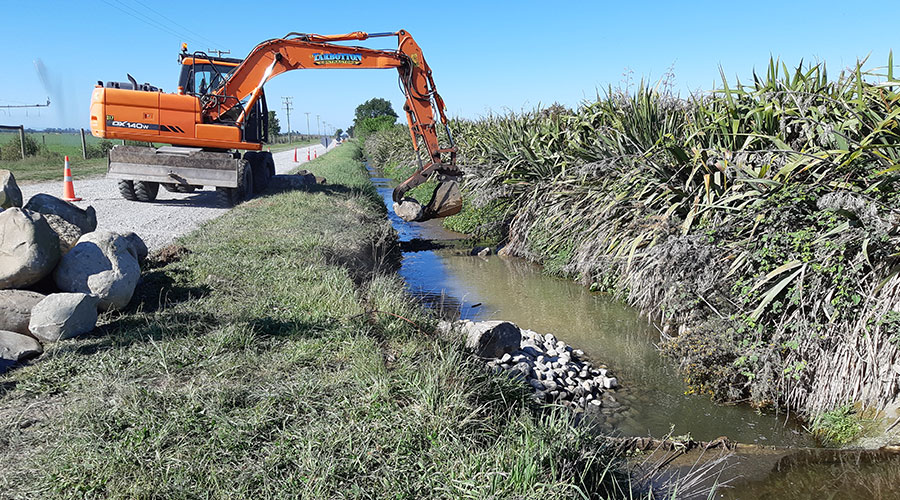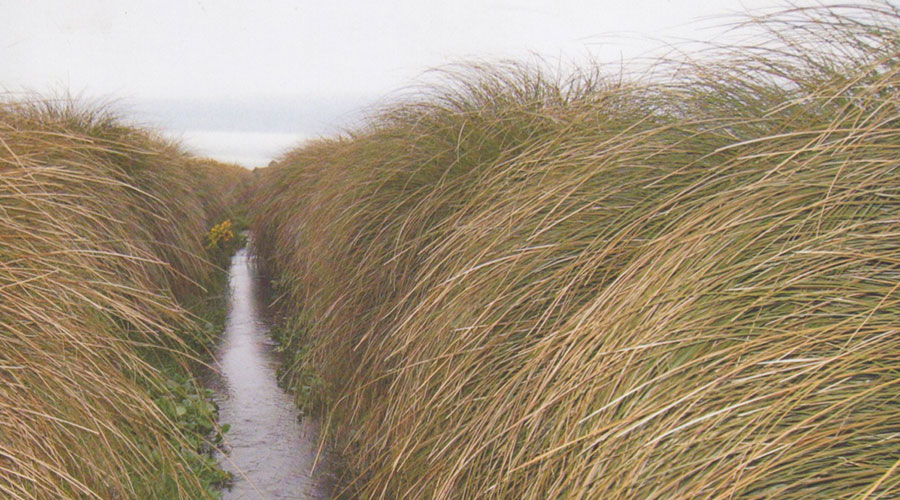
Progress review an opportunity to celebrate efforts in the Lower Hinds catchment
A review of efforts to address water quality issues within the Hekeao/Hinds catchment highlights the impressive work that’s been carried out so-far, and will help guide the next steps.
A working group looked at each of the 16 recommendations made in 2016 by the Hinds Drains Working Party (HDWP), to see how many had been achieved.
Our zone delivery lead for Ashburton, Henry Winchester, says the review was an opportunity to 'take stock' and re-set.
"It was a way of checking on the work that’s been done, while also allowing the working party to focus their energy for the still-to-be-completed actions.
"It’s also a chance to celebrate the willingness of landowners, Te Rūnanga o Arowhenua and industry groups to try new things for drain management."
Background on the HDWP
The HDWP was formed in 2014 by the Ashburton Water Zone Committee, comprising a mix of committee appointees and elected farmer community members.
It was tasked to:
"Facilitate a water body by water body approach to develop management plans for the main water bodies of the Lower Hinds Plains."
In March 2016, the working party presented 16 water management recommendations to the zone committee.
The committee then worked with HDWP members, Rūnanga, our team and the wider community to implement these recommendations.
In June 2022, on behalf of the HDWP, we undertook a five-year progress review of the actions completed.
Key projects in the catchment
There are five key projects being actioned on the ground. The following are some of the review’s key findings about their progress:
Managed Aquifer Recharge (MAR) and Near River Recharge (NRR)
MAR involves clearing the topsoil off an area to create a leaky water basin or race. Clean water is then poured into the area, which trickles down to the groundwater to help clean the groundwater system and connected springs. NRR is the same procedure, but near a river – providing a clean water top-up to the target river when flows are low.
The Hinds Drains Working Party recommended the concept of a Hekeao/Hinds MAR trial, which has successfully run since June 2016. In 2019, the Hekeao Hinds Water Enhancement Trust (HHWET) was formed to lead the trial from pilot to catchment scale.
There are now 18 operational sites which are augmenting (increasing) groundwater across the Hinds Plains area.
Since its implementation, the MAR project has achieved a new level of community support, leading to the introduction of targeted rates to fund further expansion of the trial.
As a result of the programme, a reduction in nitrate levels (from a 2019 high) across the Hekeao Hinds Plains Catchment has been observed – as well as an increase in the flow of the Hinds River.
Meanwhile, there are currently two NRR sites in action, with two more planned near Lismore School Road and Winslow Road (which includes a mahinga kai component).
A 68 percent increase in median flow of the South Branch Hekeao Hinds downstream river reach has been recorded due to NRR1 recharge.
Boundary Drain – adaptive minimum flow trial
This five-year trial was developed by the Hinds Drains Working Party. Members had agreed that the 150 litres per second, year-round restriction of water take at Boundary Drain was no longer working for farmers, as drain flows had altered with the change in irrigation practices further inland.
The trial allowed a variable consent from month-to-month to leave between 300 and 1000 litres per second as a minimum flow – while maintaining or enhancing the existing natural, economic and cultural values of the catchment. The variable consent encourages open passage to the sea at critical times for aquatic life, which is enhanced during the irrigation season by co-ordinated irrigation shutdowns after significant rain. This enables the drain to have a period of open connection to the sea
The trial has been deemed a success and an application has been lodged to continue with the flow regime.
If the consent is approved, the farmers involved will instigate mitigations for any impact on fish habitat due to lower flows – such as rock weirs in the linear reaches of the drain.
Rock weir trials for habitat diversity
The Hinds drains consist of mostly straight and narrow, manmade drains with fast-moving shallow water – providing limited habitat for instream life.
In 2015, Fish and Game led a project with the Hinds Drains Working Party and local farmers to install rock weirs in the Windermere and Taylors drains.
These weirs have proved very successful in creating a range of water depths, velocities and habitat types that are more reflective of a natural stream.
There is a wider application for the use of this technique across Canterbury and New Zealand.
Community water quality monitoring to be continued to 2026
In 2014, the Hinds Plains community began monitoring flow and water quality at 27 sites across the Hinds drains area.
In 2016, the Hinds Drains Working Party recommended that this monitoring be continued at 13 sites until 2021.
Fish and Game, Foundation for Arable Research (FAR), Beef and Lamb, DairyNZ and Environment Canterbury partnered together to fund and support this extension.
The community later requested that the programme be carried on further.
MacFarlane Rural Business (MRB) has joined the project and is collecting the monthly water samples, and we are compiling a report of these sites, along with other water quality and quantity data.
Giving effect to HDWP recommendations through plan changes
The Hinds Drains Working Party recognised that implementation of parts of its recommendations required an amendment of rules in the Canterbury Land and Water Regional Plan.
Proposed Plan Change 7 was publicly notified in 2019 and is currently under appeal, though none of the appeals are directly against provisions of the Ashburton Section 13.
In addition to the working party’s completion of many of the recommendations, significant process has been made on others, while some of the unachieved recommendations have been reviewed and amended to reflect either a change in focus or improvements in technology over the past five years.
The recently formed Hekeao Hinds Lowlands Catchment Group (part of the Mid-Canterbury Catchment Collective – MCCC) is now proactively working on enhancements in the drains. The group has applied for funding from Ministry for Primary Industry’s Freshwater Fund, which will enable members to increase their activity in the Hinds catchment.
A community effort
The HDWP had been actively engaging with Arowhenua Rūnanga in developing the recommendations, and during the review process. Mahinga kai areas and enhancements to waterways have been introduced, and further collaborative work is planned.
Zone delivery lead, Henry Winchester, says it’s been heartening to take a step back and celebrate the progress that’s been made.
"We often hear about the problem – but this is an opportunity to look at 'the doing', and it’s impressive. Take the MAR and River Recharge for example. This involves world-class research and trials that can now be applied anywhere in the world."
He also wants to highlight the key role that the community has played.
"These recommendations have relied on landowners being willing to try new things like having weirs in their drains, and new ways of stock management. They’ve engaged with us, and in the process learnt more about fish and the impact that their farming activities have on the environment."
Farmers’ actions pay off
Local farmer and chair of the HDWP, Craig Fleming, is among those who’ve been happy to implement changes to both his farm and on-farm processes to benefit the environment.
His long list of work has included riparian plantings (predominantly Carex – for shading and preventing weed growth), fitting a border deflector to prevent fertiliser being spread to the drain area, implementing plans for intensive winter grazing to protect drains, and ensuring in-drain irrigation screens meet standards for fish protection.
He believes the positive way in which various groups have come together during the HDWP process has given farmers confidence that their environmental actions are recognised and supported.
"We all have an interest in improving water quality. The solutions are complex and will take time, but I have reaffirmed through my involvement that farmers continue to want the best for the environment around them, and are innovative in identifying solutions."
The HDWP plans to initiate another progress review within two to three years (2024-2025).


